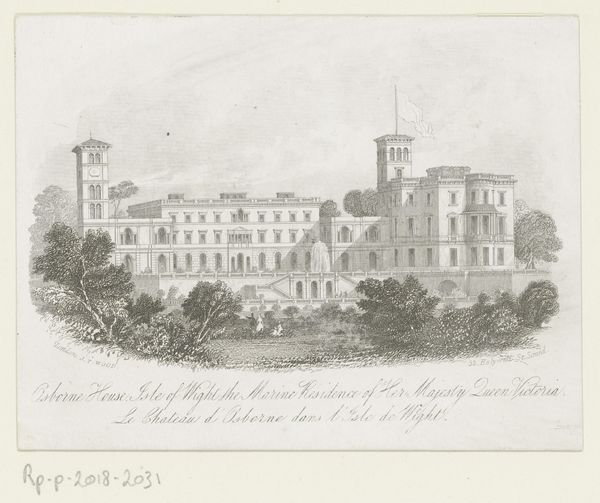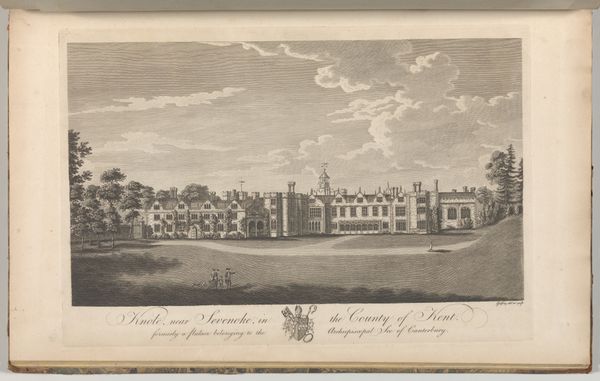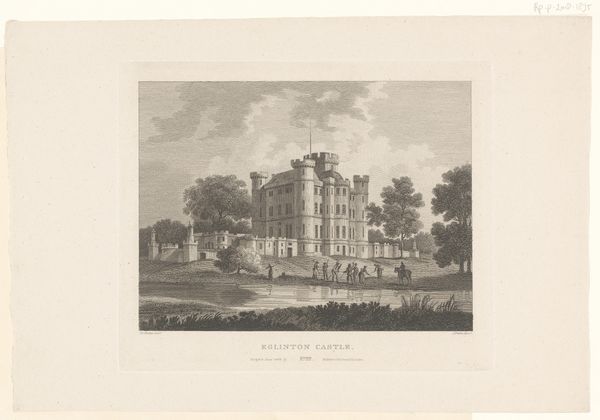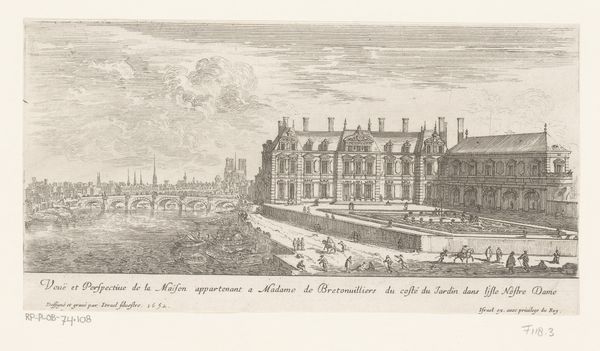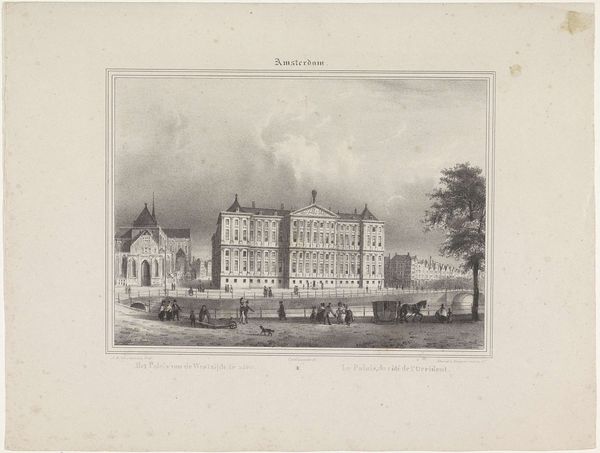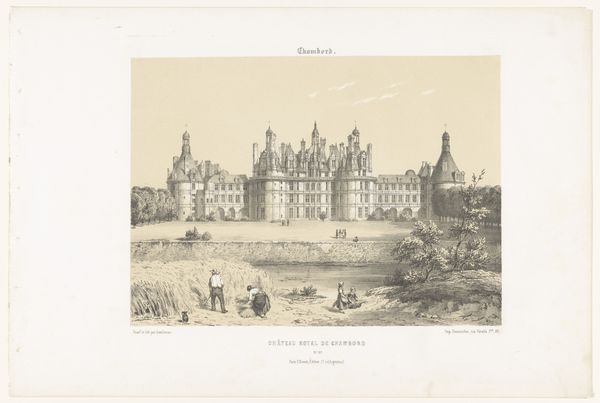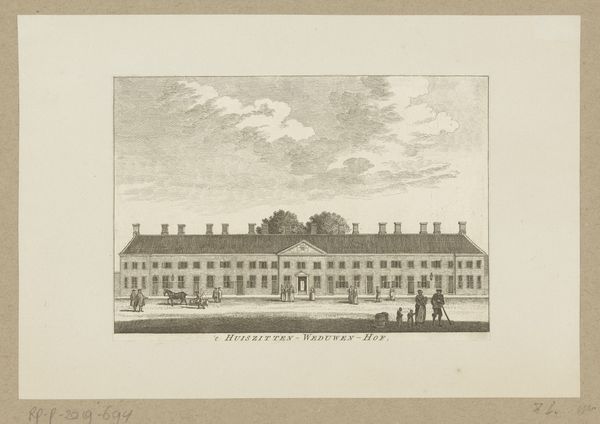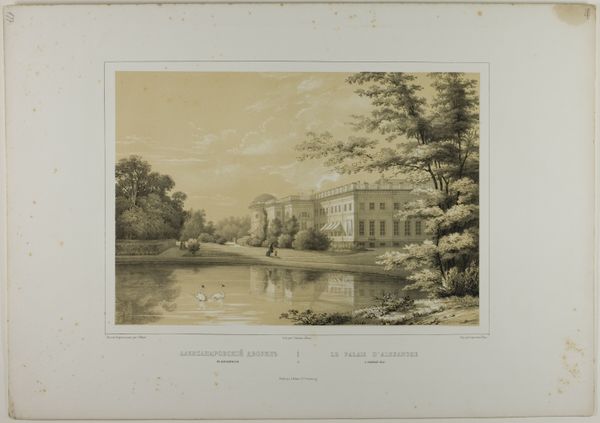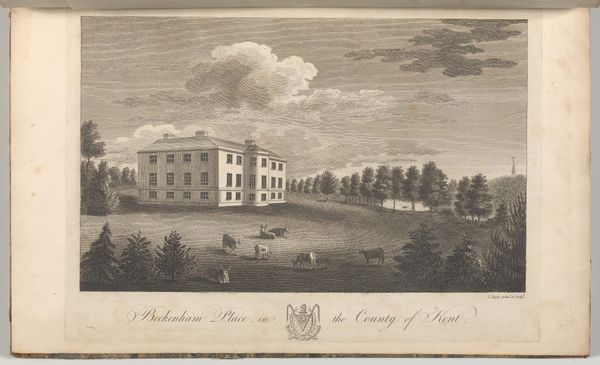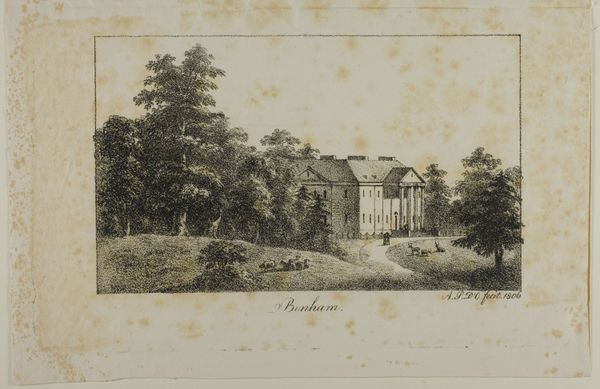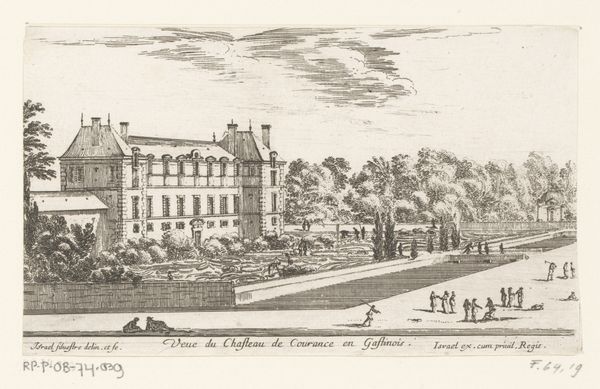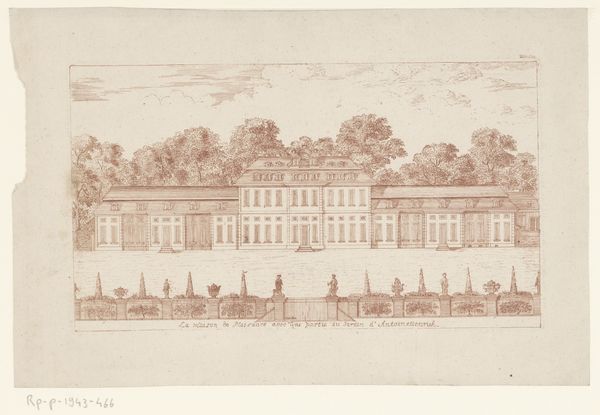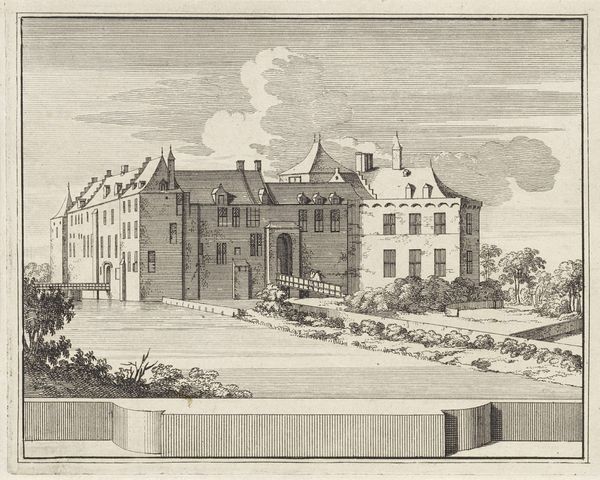
Dimensions: height 117 mm, width 152 mm
Copyright: Rijks Museum: Open Domain
Curator: This print captures Hampton Court Palace, near London, sometime between 1841 and 1885, though its creator remains anonymous. What’s your first take on it? Editor: It feels both grand and oddly delicate, doesn't it? Like a dreamscape version of an imposing palace, all rendered in shades of gray. The figures almost seem to float in the foreground. Curator: Absolutely. Engravings, like this one, held a crucial position in the dissemination of visual information. They shaped the public’s perception, acting as almost a form of visual journalism, wouldn’t you agree? This allowed a wider audience access to famous structures and landmarks. Editor: Definitely. But beyond pure information, it subtly promotes specific social ideals. The palace becomes a stage for portraying fashionable leisure. Observe the attire and social interactions – it reinforces an image of refinement and status, very performative, isn’t it? Curator: The symbolic weight is significant, echoing earlier depictions of idealized courtly life. You see baroque influences mingling with neoclassical architectural styles – all projecting a vision of power anchored in tradition. Do the costumes speak to you of any symbolism? Editor: Well, look at the women's dresses. They’re not just fashionable; they convey status, domesticity, and a certain moral standing. The children at play suggest innocence and continuity. It’s all carefully staged to communicate distinct cultural values. Even the framing of the building implies solidity and endurance. Curator: And how do you see this piece fitting within art of its time? Is it unique, or part of a tradition? Editor: I think it serves as a potent artifact illustrating the politics of image-making. This piece highlights what parts of the historical narrative got emphasis and which parts got less notice in those times, which affects how it is perceived still. Curator: It also invites us to consider its audience: who were these images made for, and how did they shape their understanding of British identity and power? A humble engraving with a heavy past to analyze. Editor: Absolutely. It reveals a desire for not just visibility but a kind of curated, approved, public facing visibility—not merely an image but a constructed vision that still shapes perspectives today.
Comments
No comments
Be the first to comment and join the conversation on the ultimate creative platform.
